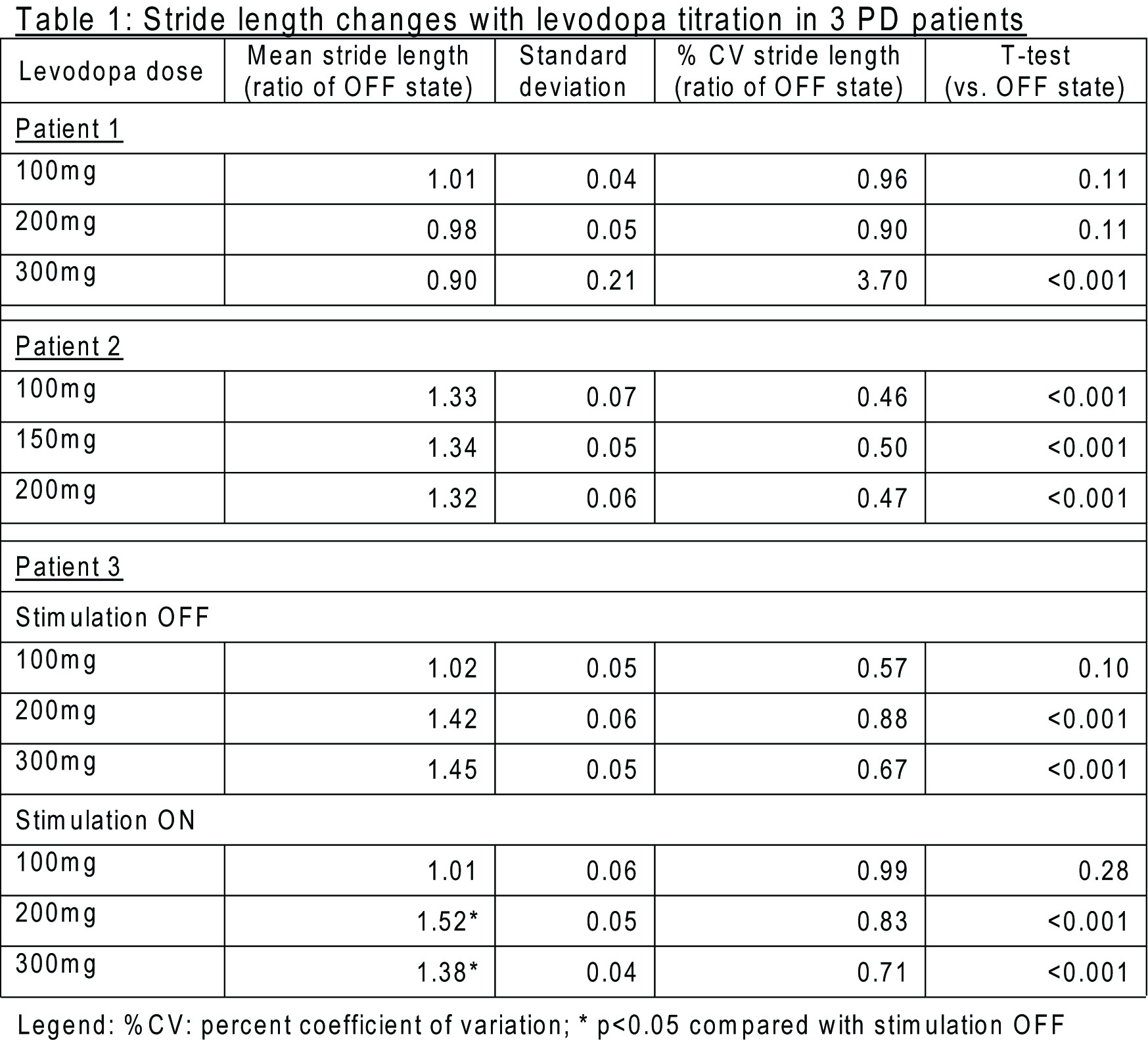Session Information
Date: Wednesday, June 7, 2017
Session Title: Phenomenology and Clinical Assessment Of Movement Disorders
Session Time: 1:15pm-2:45pm
Location: Exhibit Hall C
Objective: To determine whether objective gait assessments could guide therapeutic decision making in Parkinson’s disease (PD) patients reporting freezing of gait (FOG) in the levodopa-ON state (ON-FOG).
Background: While FOG in the majority of patients with PD improves with increasing doses of levodopa, a subset of PD patients continue to have FOG in the presence of dyskinesias (i.e. during a levodopa excess state). Some patients even report worsening FOG with higher levodopa doses.[1] While FOG diaries are useful tools, due to concurrent cognitive dysfunction, can be difficult for patients to complete and therefore unreliable.
Methods: 3 PD patients with FOG were studied who (i) failed outpatient levodopa titration despite use of a FOG specific diary and (ii) had objective FOG on exam in the presence of dyskinesias (ON-FOG). Patients walked on a 20×4 foot pressure sensor mat (Zeno Walkway, Protokinetics, Havertown, PA) with 8 repetitions, at their normal gait speed in the OFF state and then 30 and 60 minutes after a levodopa dose. Each patient was tested with 3 different levodopa doses on 3 different days. One subject had a GPi Deep Brain Stimulator (DBS) and was also assessed in the DBS on and off state. Data was collected and analyzed using the PKMAS software (Protokinetics) for mean stride length and stride length variability as these measures have previously been shown to be dysregulated in FOG patients.[2]
Results: All 3 patients had different dose response curves to levodopa titration. Patient 1 showed mild improvement in mean stride length (SL) and percent coefficient of variability (%CV) in SL at 100mg levodopa but worsening at 300 mg. Patient 2 had improvement in both parameters at 100mg levodopa that plateaued up to 200 mg. In the DBS off-state, patient 3 had improvement in %CV in SL at 100mg levodopa while mean SL improved at 200 mg levodopa and both were stable at 300mg levodopa. In the DBS on-state however mean stride length declined with increase in levodopa from 200 to 300 mg while %CV in SL was successively improving at 200mg and 300mg. Patients 1 and 2 reported improved FOG at home with the optimized settings while Patient 3 continues to report significant FOG but improved fall frequency.
[table1]
Conclusions: In difficult cases of levodopa-ON state FOG, objective gait assessments can be useful for optimizing gait.
References: 1. Espay AJ, Fasano A, van Nuenen BF, Payne MM, Snijders AH, Bloem BR. “On” state freezing of gait in Parkinson disease: a paradoxical levodopa-induced complication. Neurology 2012;78(7):454-457.
2. Hausdorff JM, Schaafsma JD, Balash Y, Bartels AL, Gurevich T, Giladi N. Impaired regulation of stride variability in Parkinson’s disease subjects with freezing of gait. Exp Brain Res 2003;149(2):187-194.
To cite this abstract in AMA style:
T. Virmani. Medication optimization in Parkinson’s disease patients with ON-state freezing using objective gait assessments [abstract]. Mov Disord. 2017; 32 (suppl 2). https://www.mdsabstracts.org/abstract/medication-optimization-in-parkinsons-disease-patients-with-on-state-freezing-using-objective-gait-assessments/. Accessed April 26, 2025.« Back to 2017 International Congress
MDS Abstracts - https://www.mdsabstracts.org/abstract/medication-optimization-in-parkinsons-disease-patients-with-on-state-freezing-using-objective-gait-assessments/

